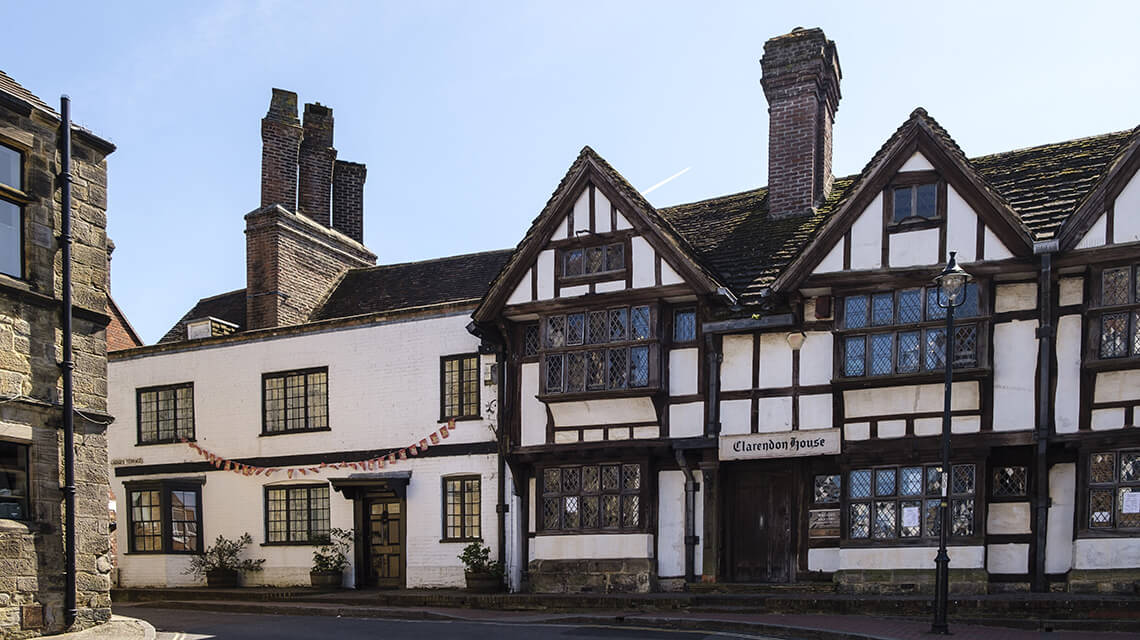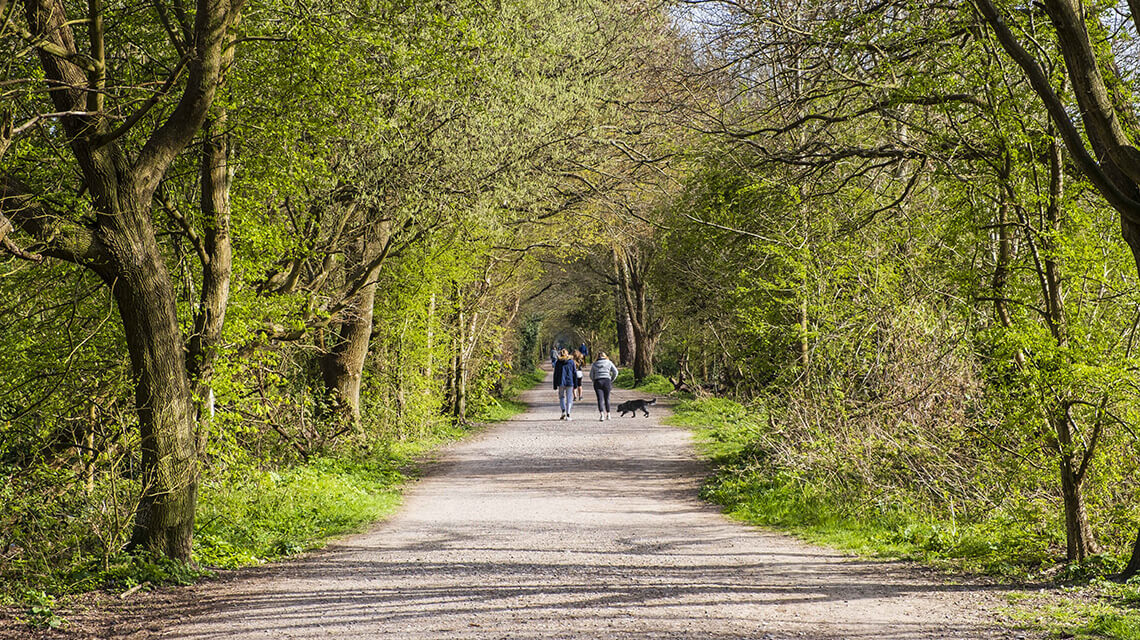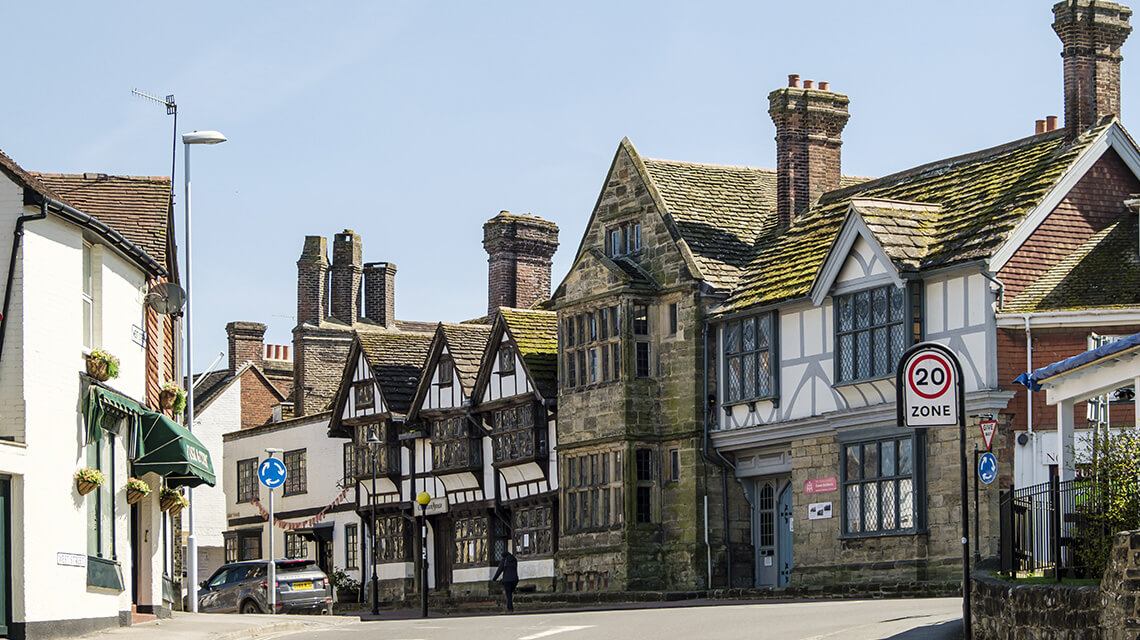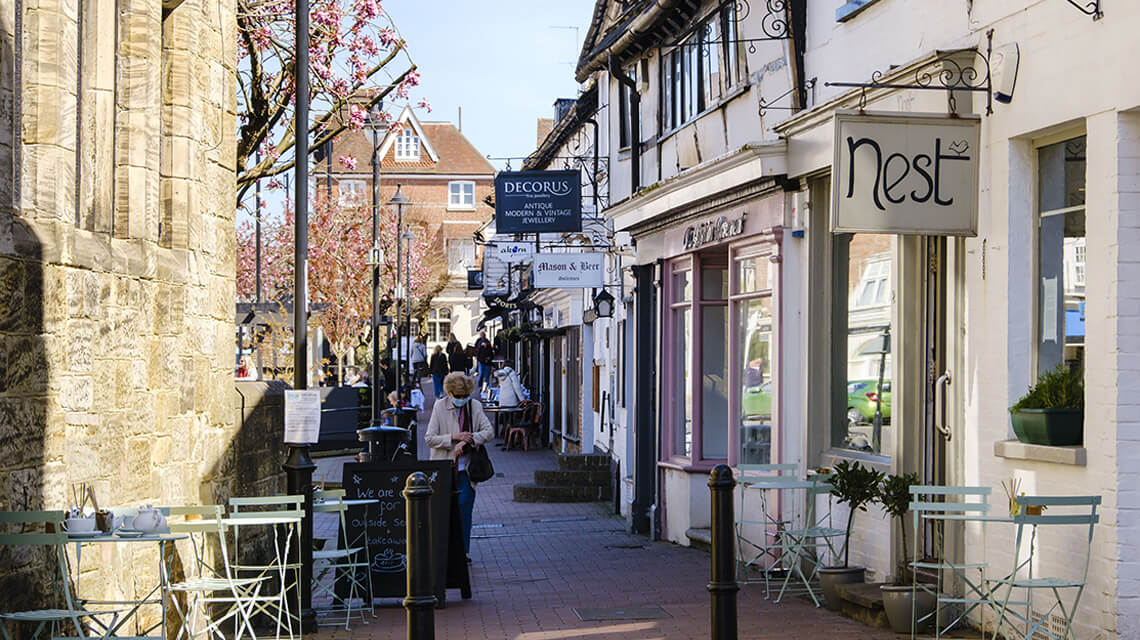Home to many notable and historic buildings, East Grinstead is a town rapidly growing in popularity. Although the town today is very different from that of its medieval past with big high-street name brands and restaurants now sitting alongside the town's original timber-framed buildings, the quintessential charm of East Grinstead has certainly remained.
The History of East Grinstead
Medieval Past
Originally a Saxon village, East Grinstead – which comes from the Old English ‘green place’ – has a deep and interesting history. Dating back to around 1200, East Grinstead officially became a town in the 13th century where it was granted the right to hold a weekly market and an annual fair within its town status. Due to its halfway point location between the south coast and London, the popularity of East Grinstead began to grow. The town became an overnight stop-over location for those traveling by stagecoach to Brighton or London. Travellers would stay overnight in the town, resting in coaching inns – many of which are the pubs of East Grinstead today.
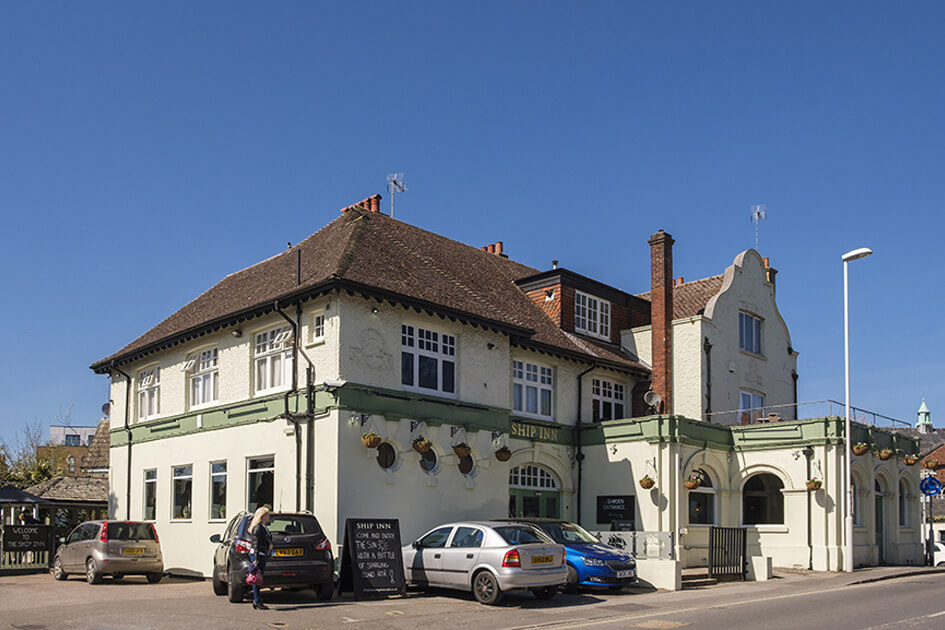
Times are Changing
By the turn of the 18th century, the town was quite prosperous by the times’ standard. Around 1,500 people resided in the town and this number continued to grow; by the late 19th century around 6,000 people were calling East Grinstead home.
The introduction of the railway in 1855 was a catalyst for East Grinstead. The station cost around £3,000 to build and the early passenger service comprised six trains each way every day, except on Sundays where there would be just two. The popularity of the service was quickly realised and the service was therefore increased. This meant that many middle-class people were now able to travel to and reside in the town and consequently the population continued to expand. This level of prosperity was very positive for East Grinstead and improvements to the existing railway were continuously achieved to accommodate the growing desirability of the town.
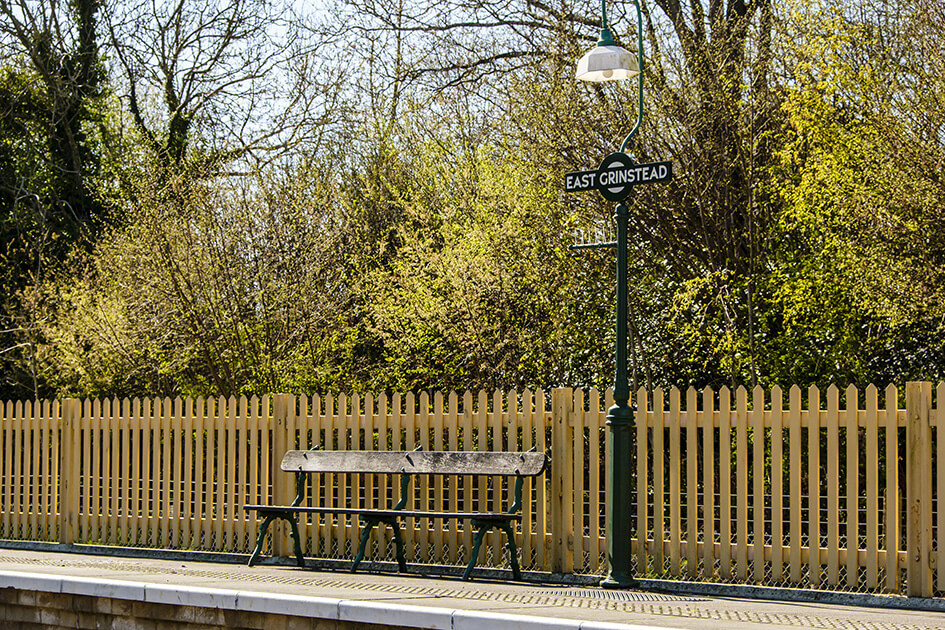
Before this time, the inhabitants of rural East Grinstead were largely agriculturally focused, relying heavily on livestock to earn a living. However, many farmers began to move out towards the coast as large towns such as East Grinstead steadily became more industrial. Between 1841 and 1901, the population of the thriving town increased by around 156%, a huge jump for a market town such as this.
With industrial development on the rise, East Grinstead’s once quiet and rural setting began to transform into something so much more. Crafts such as brick making, cement manufacturing and chalk extraction became prevalent to support the growing need for housing. Coupled with the introduction of proper sewerage and water supply by the late 19th century, East Grinstead was almost unrecognizable.
The Impact of World War II
During World War II, East Grinstead suffered a terrible impact. The town sadly lost 108 civilians on 9th July 1943 after four years of little direct affect from the ongoing war. The bombs were dropped by a lone German bomber causing the largest single wartime loss of life in the county. This small and peaceful setting would never be the same again. Within the terrible loss, many of the victims included children who had been at the cinema when the attack took place and despite a desperate rescue effort attempted by Canadian troops, the loss toll plus those injured amounted to over 300 individuals. Many of those injured in the strike endured terrible burns and were treated by burns pioneer Sir Archibald McIndoe who performed remarkable surgery in Queen Victoria Hospital. A statue in the town with the caption “The town that didn't stare” is visible today at the end of the high street in his recognition.
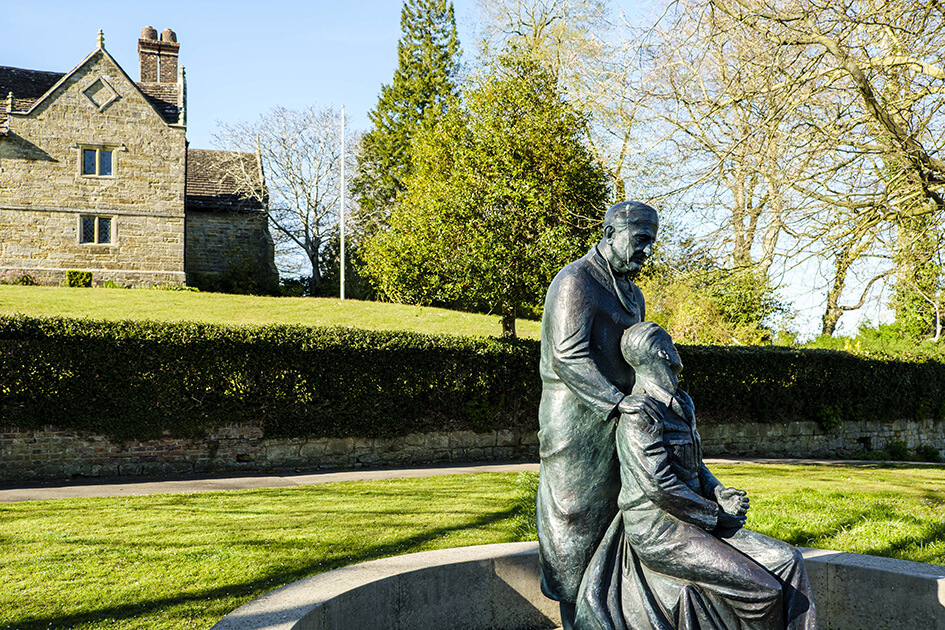
Following the devastation of the war, the town of East Grinstead began to see more private housing construction take place followed by the formation of industrial estates to further support the new, more prominent type of employment.
Modern Day East Grinstead
The modern-day East Grinstead, although somewhat unrecognizable compared to its early years, still has many original features to be admired. The high street – which is famously home to a continuous line of timber-framed buildings set amidst many popular bars, pubs, and eateries – is peppered with a mixture of independent businesses as well as many well-known high street favourites. Residents of the area enjoy the convenience of the walking distance to the myriad of local amenities whilst being on the doorstep of some truly spectacular greenery. East Grinstead borders the High Weald Area of Outstanding Natural Beauty and offers locals the opportunity to enjoy woodland walks, breath-taking scenery and a charming landscape.
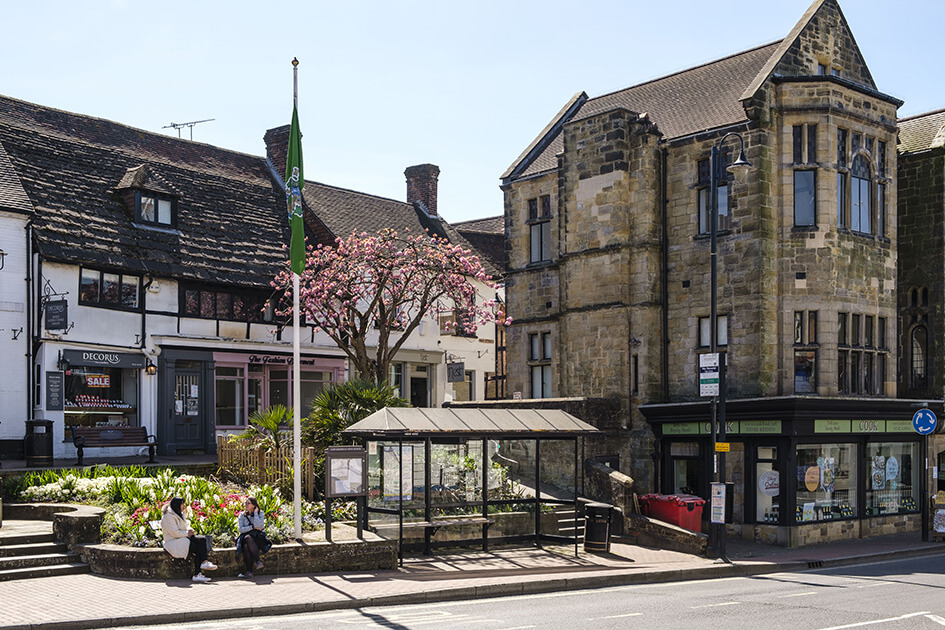
The town is home to around 80 listed buildings that include 16 timber-framed houses and two Grade I listed buildings. One of the most notable buildings in the town is Sackville College which was built in 1609. The college was founded as an almshouse in 1609 and later became the birthplace of the hymn Good King Wenceslas. Now run as a charity, the sandstone building remains beautifully preserved and is located at the end of the high street.
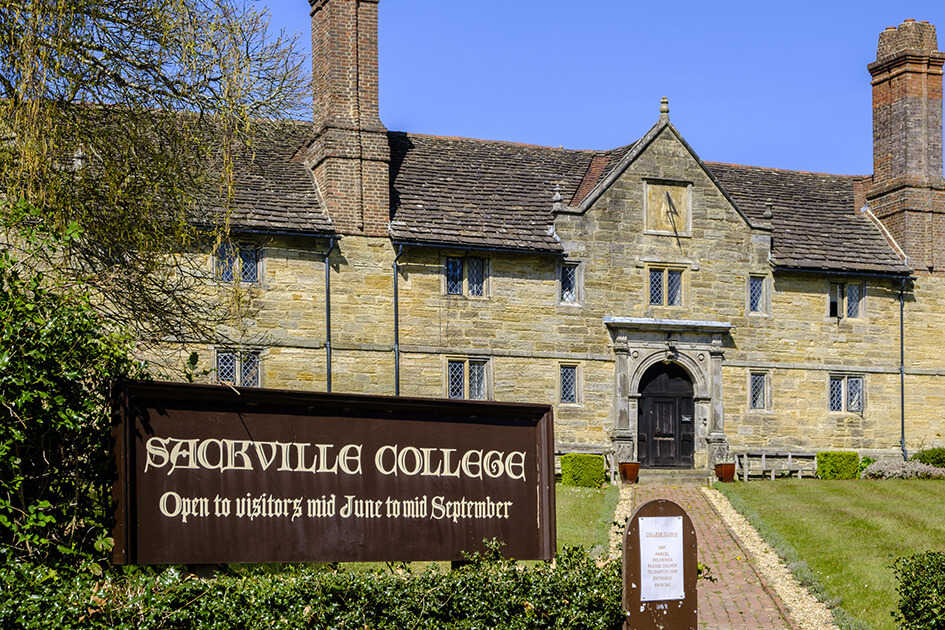
Newacre House is now sold out. For more information, please visit the development page or use our property search tool to find other available properties. Alternatively, call us on 020 3409 2270 to speak with our team.
